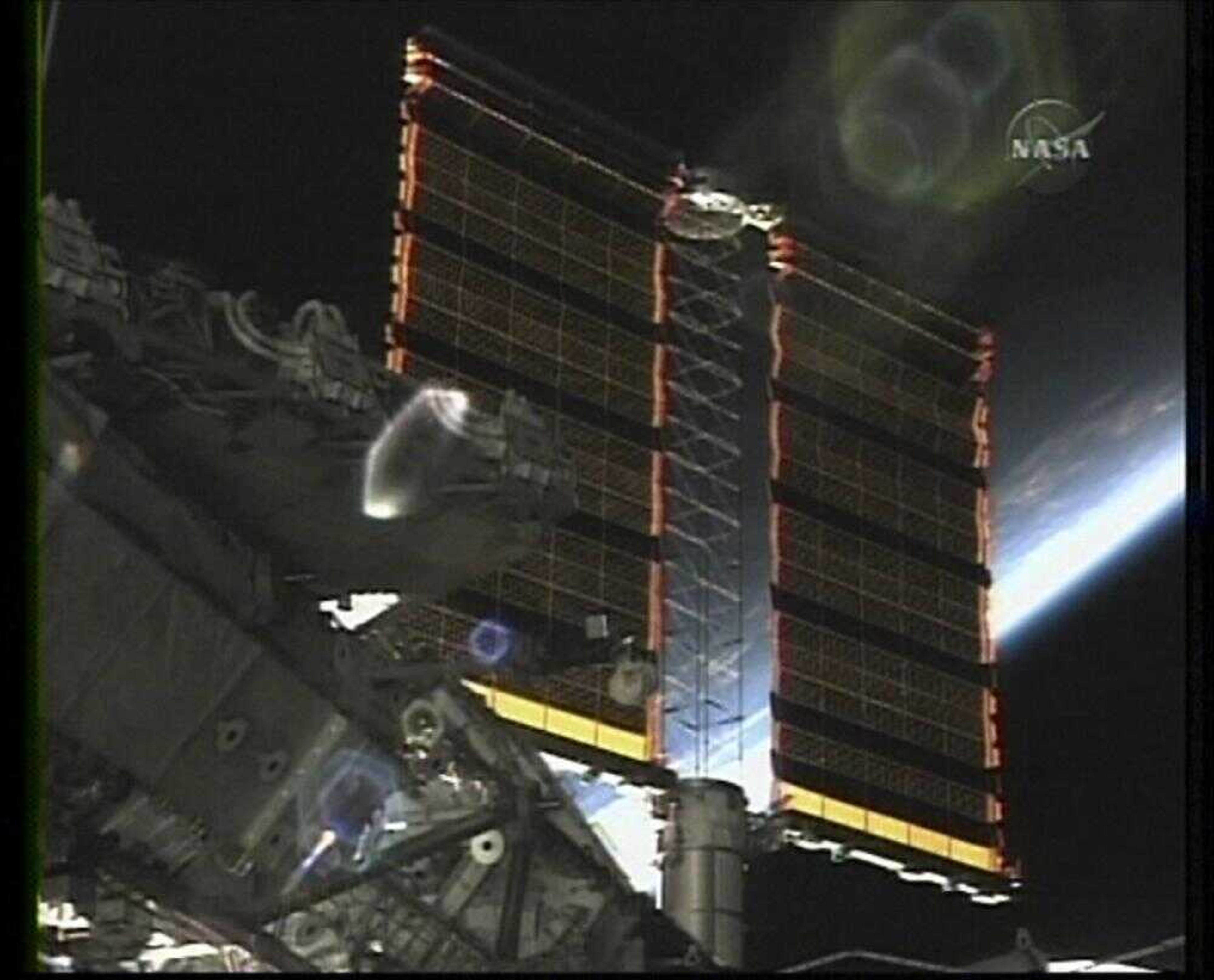Each solar wing is 115 feet long and weighs more than 2,400 pounds.
By JUAN A. LOZANO
The Associated Press
HOUSTON -- The international space station's newest power source -- a set of solar wings -- made its debut Tuesday.
The solar array is part of a new 17.5-ton space station segment that was connected to the orbiting outpost during a spacewalk Monday.
The solar wings were deployed one at a time, first halfway unfurled and allowed to warm in the sun about 30 minutes. This prevented the solar panels from sticking together.
"We see a good deploy," astronaut James Reilly, who helped connect the new segment Monday, said after the second wing was unfurled.
"Good work," Mission Control said.
The new solar panels were unfolded like an accordion window blind, their orange and black colors reflecting the sunlight.
Each solar wing is 115 feet long and weighs more than 2,400 pounds. The entire solar array's wingspan is more than 240 feet. The array, which converts sunlight to electricity, is the station's third pair of solar panels.
Overnight Tuesday, while the astronauts on the shuttle Atlantis slept, engineers at Mission Control began remotely unfolding the array from its storage box.
An older solar array will be folded up into a box today so it can be moved during a later shuttle mission. That array's retraction will allow the newly installed pair of panels to rotate and follow the sun. Also today, the mission's second spacewalk was scheduled to finish activating the station's new segment.
Tuesday's smooth unfurling of the solar wings was in contrast to last September, when a software glitch delayed for hours the unfolding of another set of panels.
NASA was expected to decide Tuesday whether Atlantis astronauts would fix a peeled-back thermal blanket near the spacecraft's tail during a previously planned third spacewalk or a newly added fourth one.
The shuttle astronauts' 11-day mission was extended Monday by two days to allow time to fix the thermal blanket, which peeled during launch last week.
Engineers at Johnson Space Center in Houston were practicing techniques the astronauts might use to make repairs.
The repair to the thermal blanket, covering a 4-by-6-inch area over an engine pod, would likely involve an astronaut reaching the shuttle's tail area while being attached to the end of the spacecraft's robotic arm and boom.
The thermal blankets are used to protect the shuttle from searing heat during re-entry into Earth's atmosphere. Engineers don't think the intense heat could burn through the graphite structure underneath it and jeopardize the spacecraft.
But it could damage the shuttle, requiring repairs after landing that could delay the three additional flights to the space station NASA has scheduled for the remainder of the year.
The rest of the shuttle appeared to be in fine shape, NASA said.
Connect with the Southeast Missourian Newsroom:
For corrections to this story or other insights for the editor, click here. To submit a letter to the editor, click here. To learn about the Southeast Missourian’s AI Policy, click here.







